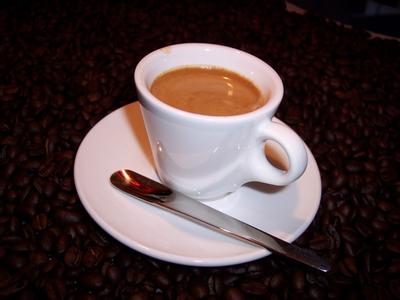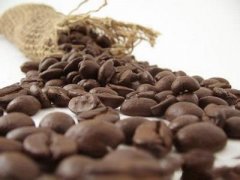Basic concepts of ESPRESSO COFFEE
Building Knowledge Architecture--------------

A bunch of facts is just a bunch of facts. Theory is the skeleton of facts. One thing I have learned from teaching someone how to cook espresso is that if they are taught the basics of espresso at the beginning, they will be more likely to cook it themselves at the end of the course. Because to cook a good espresso you have to deal with complex practical problems. With an appropriate theoretical basis, their ability to understand problems can be enhanced.
Why is it so hard to cook espresso?----------
Most of the problems encountered in brewing great espresso are due to two factors: "uneven water flow" and "coffee aroma is very volatile."
Water flow problems------------
Modern espresso machines can produce 120 to 130 pounds of water pressure, while coffee filter cakes are less than half an inch thick. The big problem with espresso is that it uses hot pressurized water to pass through a thin coffee cake.
Water has a property---------
He would always find the shortest path of least resistance among coffee grounds, rather than obediently trying to extract soluble coffee oils. So much of this book is about how to make coffee powder evenly resistant to high pressure water.
Any slight density unevenness or surface cave-in in of the coffee cake will cause the high-pressure water to rush in and punch through your "hood door." The less dense part of the coffee cake is over-extracted after the tasty ingredients flow out. And the higher density part, but also insufficient extraction.
When the espresso comes out, the water spirals. The surface tension is relatively high, tightly attached to the water outlet. In addition to the delicious reddish-brown liquid, there are white lines, and the brewed coffee is also relatively small.
Worse, it happens when the beans are ground too coarse or when the filter cake has uneven resistance. The high-pressure water poured out and flowed down as a light brown liquid
It was a beautiful place to be.
This is the perfect espresso------
Grind the correct amount of coffee powder, carefully spread it out, compact it evenly with a filler and spin it flat. There should be some clearance between the surface of the coffee cake and the distribution net at the outlet of the machine. Turn on the pump switch, and water will flow down to moisten the coffee powder for about a second before the pump actually starts. This is called "pre-impregnation," which helps seal the surface of the cake (Italian engineers know the benefits of "pre-impregnation"), and the delicious ingredients in the powder are less sticky after hot water contact, and easier to extract when the high-pressure water comes.
Because the brewing temperature is as high as 200 degrees Fahrenheit and the pressure is as high as 120 pounds, if the resistance of the filter cake is uneven, it will punch holes or pores, resulting in uneven extraction. The under-extracted part will cause a yellowish brown liquid in the water outlet, and the over-extracted part will dissolve other substances and cause white stripes.
In fact, what has been said above is only an idealized overview. There are many factors that can seriously affect the ability of coffee grounds to withstand water pressure, such as: packing, dosage, freshness of beans, fineness of grinding, blade form of the grinder, and air humidity. Only by controlling these many factors and understanding their relationship can we solve this problem.
When that's done, for the next 25 seconds, you can see a stream of high-pressure water squeezing through the coffee grounds to infuse the perfect espresso.
Important Notice :
前街咖啡 FrontStreet Coffee has moved to new addredd:
FrontStreet Coffee Address: 315,Donghua East Road,GuangZhou
Tel:020 38364473
- Prev

Carcinogenic benzopyrene released from fried coffee beans
Do you like coffee? Some coffee shops will also stir-fry coffee beans in the shop, emitting a strong smell and attracting guests, but the smell has been smelled for a long time, I am afraid it is not good for health.
- Next

Espresso principle
The aroma components dissipate easily-the rich aroma emitted when grinding fresh coffee has inspired the poet for hundreds of years. In order to capture these aromas in coffee cups, all kinds of beautiful shapes and strange coffee machines have come out one after another, thus achieving this arduous super task. Make the brewed coffee as fragrant as the freshly ground coffee
Related
- Beginners will see the "Coffee pull flower" guide!
- What is the difference between ice blog purified milk and ordinary milk coffee?
- Why is the Philippines the largest producer of crops in Liberia?
- For coffee extraction, should the fine powder be retained?
- How does extracted espresso fill pressed powder? How much strength does it take to press the powder?
- How to make jasmine cold extract coffee? Is the jasmine + latte good?
- Will this little toy really make the coffee taste better? How does Lily Drip affect coffee extraction?
- Will the action of slapping the filter cup also affect coffee extraction?
- What's the difference between powder-to-water ratio and powder-to-liquid ratio?
- What is the Ethiopian local species? What does it have to do with Heirloom native species?

